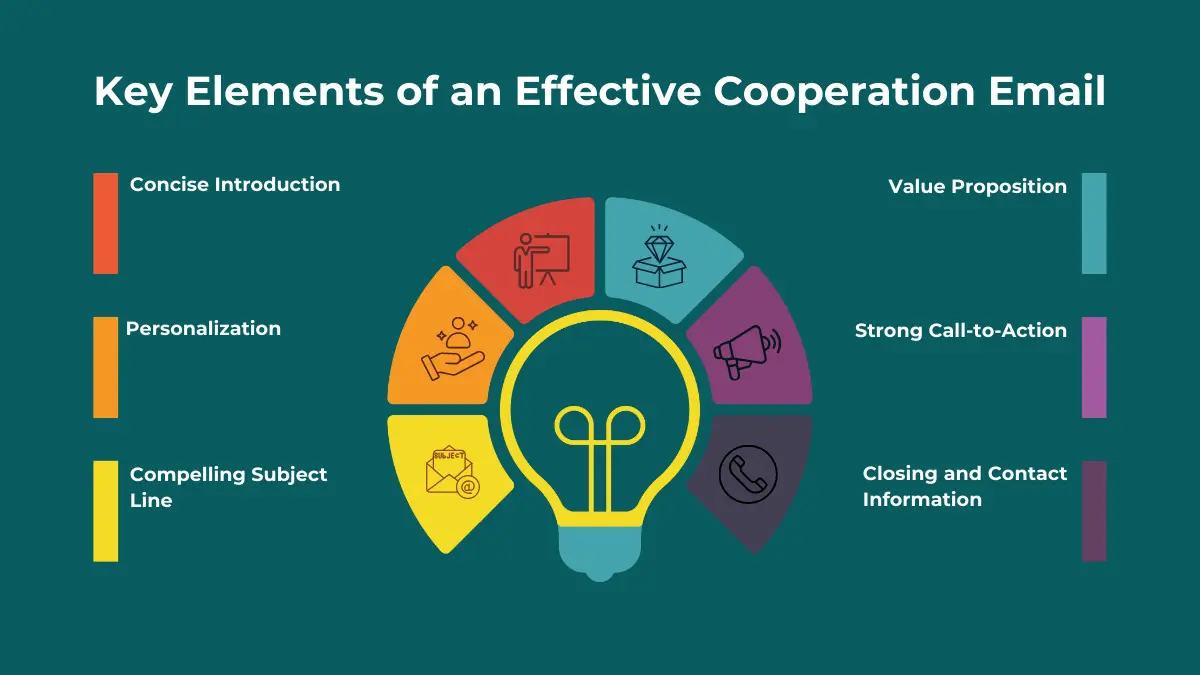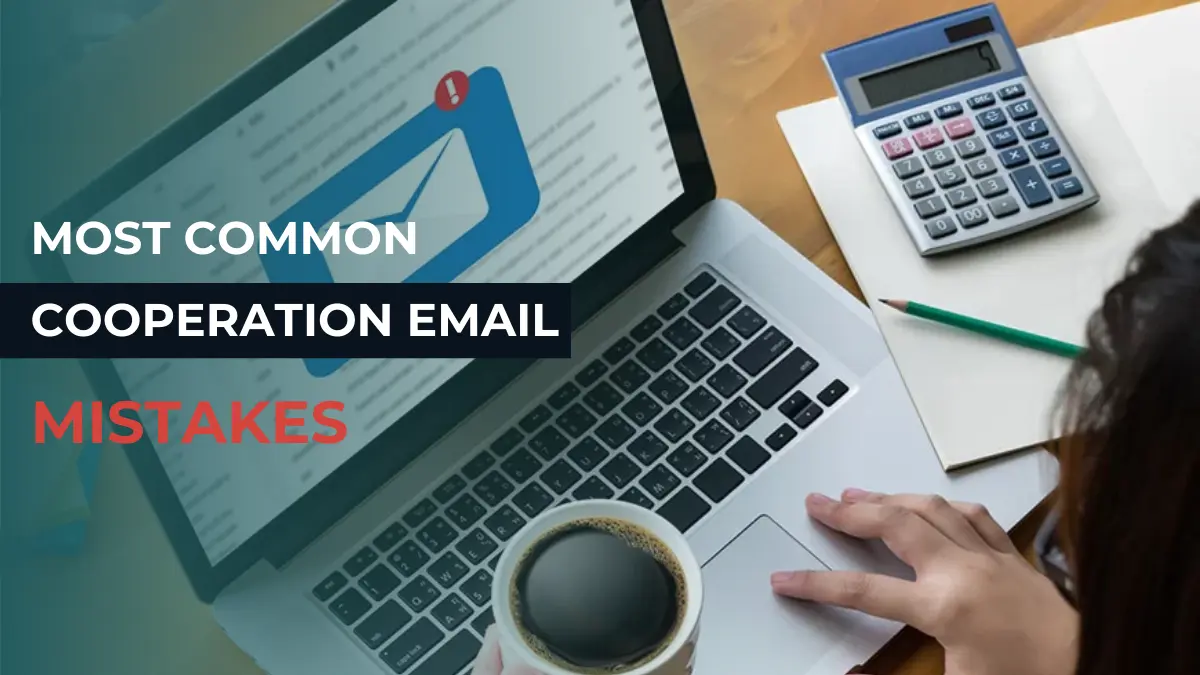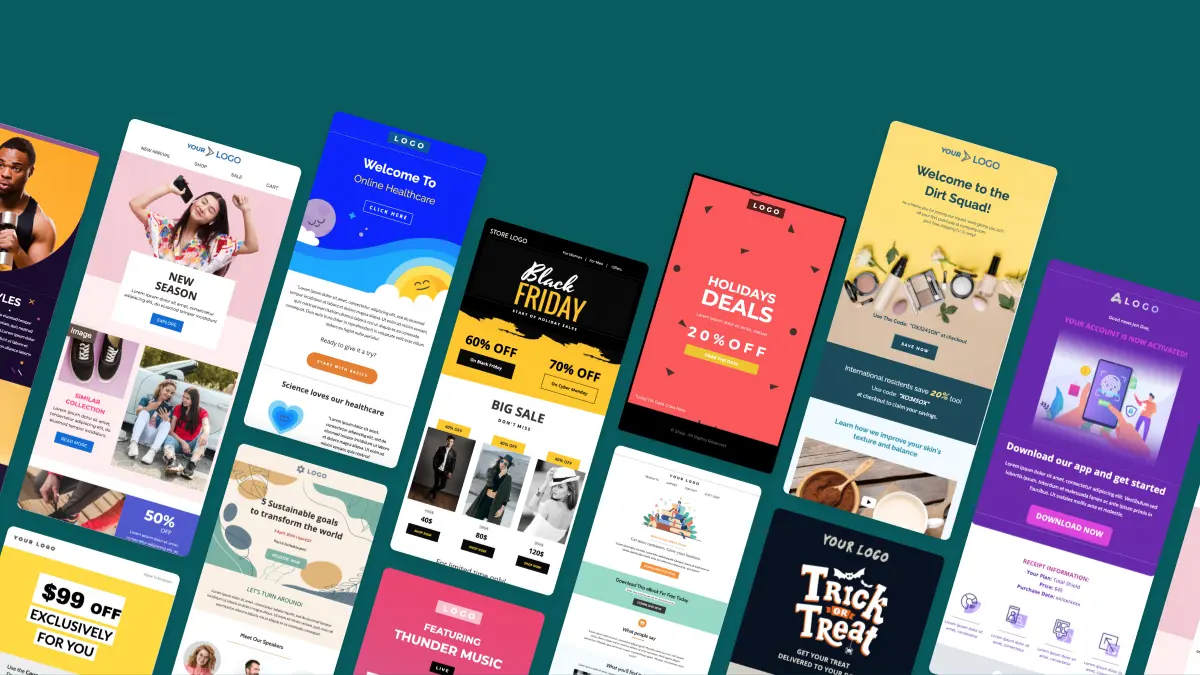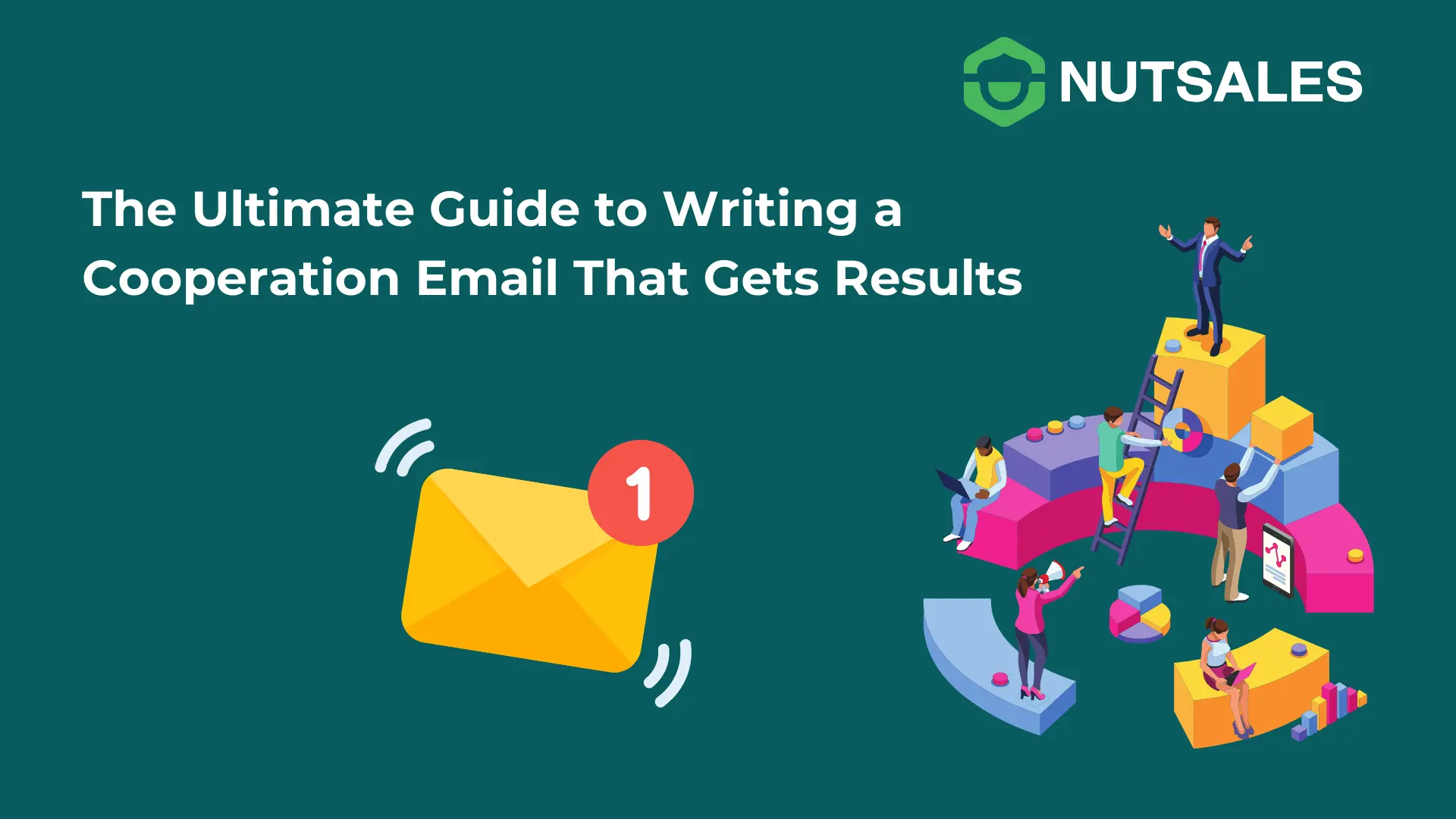In today's fast-paced business world, knowing how to write an effective cooperation email can make all the difference in securing valuable partnerships. Whether you're reaching out for a business partnership email, proposing a brand collaboration, or exploring a B2B cooperation, crafting the right message is essential. A well-structured email for cooperation grabs attention and sets the stage for successful collaboration.
This guide will walk you through everything you need to know about writing a compelling cooperation email - from structuring your message to best practices and templates for different scenarios. Whether you're an influencer looking for a brand collaboration email template or a business professional seeking business partnership email examples, this article has you covered.
1. Understanding the Purpose of a Cooperation Email
A cooperation email is a professional message sent to initiate a working relationship between two parties. The goal is to present a business collaboration email that clearly outlines mutual benefits and encourages engagement. Here are common scenarios where a cooperation email is useful:
- Brand collaboration emails: Influencers reaching out to brands for paid partnerships.
- Business partnership emails: Companies looking to establish joint ventures or strategic alliances.
- B2B cooperation emails: Businesses partnering for mutual growth through knowledge sharing, co-marketing, or product integration.
- Affiliate marketing collaboration: Proposing a commission-based promotion.
- Event partnership emails: Inviting brands or companies to co-host events or sponsorships.
By understanding the purpose of your email for cooperation, you can craft a message that resonates with your recipient and increases the chances of a positive response.
Read More: Threading Emails: How to Manage It Effectively?
2. Key Elements of an Effective Cooperation Email

Writing a cooperation email that gets results requires a strategic approach. A well-crafted email should immediately capture the recipient’s attention, establish credibility, and communicate clear value. Here are the essential components of a successful business partnership email:
2.1 A Compelling Subject Line
The subject line is the first thing your recipient sees, making it a critical factor in whether your email for cooperation gets opened. A strong subject line should be concise, relevant, and engaging. Some examples include:
“Exciting Collaboration Opportunity: [Your Business] x [Their Business]” “Let’s Partner! A Win-Win Opportunity for [Their Business Name]” “Unlock New Growth: Strategic Partnership Proposal”“Strategic Collaboration Proposal: [Your Business] & [Their Business]” “Exploring a Mutually Beneficial Partnership with [Their Business Name]” “Proposal for a Strategic Partnership to Drive Mutual Growth”
2.2 Personalization
Avoid sending generic messages. Address the recipient by name and reference something specific about their business. Personalization shows that you’ve done your research and increases the likelihood of engagement.
2.3 A Clear and Concise Introduction
Start your cooperation email with a strong opening that briefly introduces yourself and your company. Clearly state the purpose of the email in one or two sentences to ensure the recipient understands the intent immediately.
2.4 The Value Proposition
Explain why the recipient should be interested in this collaboration. Whether you’re writing a brand collaboration email or a business partnership email, highlight the mutual benefits and potential outcomes of working together. Emphasize what makes this opportunity valuable and unique.
2.5 A Strong Call-to-Action (CTA)
Every effective cooperation email should have a clear next step. Whether it's scheduling a call, arranging a meeting, or requesting feedback, include a direct and actionable CTA. Examples include:
“Would you be available for a 15-minute call next week to discuss this in more detail?” “Let me know a time that works for you, and I’d be happy to share more details.” “Looking forward to your thoughts on this collaboration!”
2.6 Professional Closing and Contact Information
Wrap up your email for cooperation with a polite closing statement. Express gratitude for their time and provide your contact details to encourage further communication. Sign off with your full name, company name, and any relevant links to your website or portfolio.
By incorporating these key elements into your business collaboration email, you increase the chances of securing a positive response and building a successful partnership.
3. Common Mistakes to Avoid in a Cooperation Email

Even with a well-structured cooperation email, certain mistakes can reduce your chances of getting a response. Avoiding these pitfalls ensures that your emails remain professional, persuasive, and effective. Below are some of the most common mistakes and how to avoid them.
3.1 Using a Generic or Vague Subject Line
The subject line is one of the most crucial elements of your email. If it’s too generic, such as “Collaboration Request” or “Business Proposal”, it may not grab attention or convey the email’s importance. Instead, be specific and relevant. Mention the company name, the nature of the collaboration, or a unique selling point that will intrigue the recipient. A good subject line makes the difference between your email being opened or ignored.
3.2 Lack of Personalization
Failing to personalize an email makes it appear as if it was sent in bulk, reducing the chances of engagement. Research the recipient, their company, and recent activities to include personalized details. Mention a recent achievement or initiative they’ve launched. When a recipient sees their name and company referenced, they’re more likely to take the email seriously and respond positively.
3.3 Overly Long Emails
While you want to provide sufficient information, a long email can overwhelm the recipient. Most professionals scan emails quickly, so keep your message concise and to the point. Use short paragraphs, bullet points where necessary, and avoid unnecessary background information. If more details are needed, suggest a follow-up call instead of cramming everything into the initial email.
3.4 Focusing Too Much on Yourself
A cooperation email should focus on mutual benefits rather than solely on what you want. Avoid making the email all about your company and its achievements. Instead, clearly articulate how the recipient will benefit from the collaboration. Show that you understand their needs and explain how working together will create value for them.
3.5 Not Including a Clear Call-to-Action
Many emails end with vague statements like “Let me know what you think” or “Looking forward to hearing from you”. These leave too much room for inaction. A strong cooperation email should guide the recipient toward the next step, such as “Would you be available for a quick call next week?” or “Please reply with a convenient time to discuss further.” Specific requests increase the likelihood of a response.
3.6 Ignoring Follow-Ups
Not receiving a reply doesn’t necessarily mean the recipient isn’t interested. They might have overlooked the email or been too busy to respond. A polite follow-up email after a week can remind them of your proposal. Keep it short and professional, briefly reiterating your proposal and expressing your continued interest in collaborating.
3.7 Poor Formatting and Grammar Errors
Professionalism in emails extends beyond just the content—it includes presentation. Emails with spelling mistakes, improper grammar, or poor formatting can harm credibility. Before sending, proofread the email thoroughly, use spell-check tools, and ensure a clean layout with clear paragraph breaks. A well-structured and error-free email increases professionalism and leaves a positive impression.
By avoiding these common mistakes, your email for cooperation will come across as more polished, professional, and persuasive, significantly increasing your chances of securing valuable partnerships.
Read More: 8 Best Email Management Software For Your Business
4. Cooperation Email Templates for Different Scenarios

Crafting the perfect email for cooperation requires tailoring your message to fit your audience. Whether you're looking for how to write a collaboration between two brands, need guidance on how to email brands for collaboration, or are searching for influencer paid collaboration pitch email examples, these templates will help you get started.
4.1 Brand Collaboration Email (How to Email Brands for Collaboration)
Subject: Exciting Collaboration Opportunity – Let’s Work Together!
Hi [Brand’s Name],
I’m [Your Name], a [Your Niche] content creator with an engaged audience on [Your Platforms]. I’ve been following [Brand Name] for a while and admire your commitment to [specific brand value]. I’d love to collaborate and introduce your [product/service] to my audience in an authentic way. Let’s explore how we can create valuable content together! Would you be open to a quick call to discuss this further?
Best,
[Your Name][Your Contact Information]
4.2 Business Partnership Email (How to Write a Collaboration Between Two Brands)
Subject: Let’s Collaborate – A Strategic Opportunity for [Brand Name]
Hi [Recipient’s Name], I hope you’re doing well! My name is [Your Name] from [Your Company], and I see a strong synergy between our brands. We’d love to explore a partnership where we can leverage our strengths and create a mutually beneficial collaboration. Let’s connect and discuss how we can bring this vision to life. Would you be available for a short call next week?
Best regards, [Your Name][Your Contact Information]
4.3 Influencer Paid Collaboration Pitch Email Examples
Subject: Paid Collaboration Proposal – Let’s Work Together!
Hi [Brand Name],
I’m [Your Name], an influencer in [your niche] with an audience that aligns with your target market. I’d love to discuss a paid collaboration where I showcase your [product/service] to my engaged followers. Would you be interested in exploring this opportunity? Let’s chat!
Best, [Your Name][Your Contact Information]
4.4 Follow-up Email (If No Response)
Subject: Quick Follow-Up on My Previous Email
Hi [Recipient’s Name],
I wanted to follow up on my previous email regarding [collaboration topic]. I know you have a busy schedule, but I’d love the opportunity to discuss this further. Please let me know if you’d be open to a short call next week. Looking forward to your thoughts!
Best, [Your Name][Your Contact Information]
4.5 Guest Blogging Collaboration Email
Subject: Guest Blogging Opportunity – Let’s Create Value Together!
Hi [Recipient’s Name], I’m [Your Name] from [Your Company], and I’ve been following your blog on [Industry/Niche]. I admire your content and believe we can collaborate on a guest blogging opportunity that benefits both our audiences. I’d love to contribute a high-quality post on [Proposed Topic], which I believe aligns with your audience’s interests. In return, I’d be happy to feature your insights on our platform. Would you be open to discussing this further? Looking forward to your thoughts!
Best, [Your Name][Your Contact Information]
4.6 Joint Webinar Collaboration Email
Subject: Let’s Host a Webinar Together!
Hi [Recipient’s Name], I hope you’re doing well! I’m [Your Name] from [Your Company], and I wanted to explore the possibility of co-hosting a webinar with [Recipient’s Company]. Given our shared expertise in [Topic], I believe a joint webinar could provide immense value to both our audiences. We could discuss key trends, share insights, and engage with our communities in a meaningful way. Would you be open to brainstorming ideas for this collaboration? Looking forward to hearing your thoughts!
Best, [Your Name][Your Contact Information]
5. Best Practices for Writing a Cooperation Email
To increase the chances of a positive response, follow these best practices when crafting your cooperation email:
5.1 Keep It Concise and Clear
Long, overly detailed emails can overwhelm the recipient and decrease the likelihood of a response. Keep your message brief while still providing enough information to generate interest. Use short paragraphs and bullet points where necessary to improve readability.
5.2 Use a Persuasive Yet Professional Tone
Strike the right balance between enthusiasm and professionalism. Express genuine interest in the collaboration while maintaining a respectful tone. Avoid overly casual language, but also refrain from sounding overly formal or robotic.
5.3 Personalize Your Message for Each Recipient
A generic, mass-sent email is unlikely to be effective. Research the recipient and tailor your message accordingly. Mention their company, recent projects, or specific reasons why you believe a collaboration would be beneficial.
5.4 Clearly Outline Mutual Benefits
Instead of focusing solely on what you want from the recipient, emphasize how the collaboration benefits both parties. Demonstrating an understanding of their needs and goals makes your proposal more compelling.
5.5 Follow Up Strategically
If you don’t receive a response within a week, send a polite follow-up email to check in. Keep it brief, restate your interest, and offer to provide additional information if needed. Persistence without being pushy increases the chances of securing a response.
5.6 Attach Relevant Materials (If Applicable)
If you’re an influencer or content creator, including a media kit can strengthen your proposal. A media kit should showcase audience demographics, past collaborations, engagement metrics, and testimonials from previous partnerships.
5.7 Proofread for Grammar and Formatting Errors
Typos and formatting mistakes can make your email look unprofessional. Before sending, proofread your message carefully or use grammar-checking tools to ensure clarity and professionalism.
5.8 End with a Clear Call-to-Action
Ensure that your email concludes with a specific request, such as scheduling a call, confirming interest, or providing feedback. A well-defined CTA guides the recipient toward taking the next step.
Wrapping Up
A well-structured cooperation email is essential for establishing successful partnerships. By crafting a compelling subject line, personalizing your message, and clearly outlining mutual benefits, you improve your chances of securing a positive response. Avoid common mistakes, follow best practices, and always include a strong call to action to guide the recipient toward the next step. Whether you’re pursuing brand collaborations, business partnerships, or influencer collaborations, refining your approach will help you build lasting, mutually beneficial relationships. Start applying these strategies today and take your professional collaborations to the next level!
